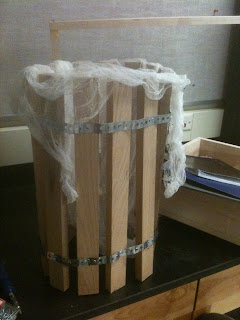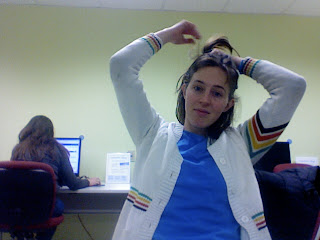
At the beginning of the year I had this great plan for my Experimental Physics course. We could build cider presses in the fall (tis the season), and use them as a vehicle for learning about simple machines, force, and torque. Sounds brilliant, right? Engaging! Interesting! Culturally relevant!
Buuuut yeaaaa... Oh dear. They're still not done and it's quarter 2 now (yikes!). We have the school harvest festival on Tuesday, and we were hoping to get them TOTALLY completed by then. That may still happen - we just have some pieces that need to get welded and then attached, and BOOM. Done. And I, for one, will be very pleased to let them go. Btw, we're auctioning them off... more news on that to come.
With the imminent end of this gigantic process just around the corner I've been reflecting on how I would do this differently next time. Let's just say, there were several things I would do differently should I do this project again. Here were the problems and their potential solutions.
1. The groups were too big, thus too many people were unengaged.
Next time, the Maximum group size: 3
2. This was pretty much the first thing we did as a class, so I didn't know people's strengths, personalities, and group dynamics.
Next time, I wouldn't do a giant project right off the bat.
3. This class does not meet for 1.5 periods like my other physics class. There's less time in general, soooo...
Next time, I don't have a solution for this :P. Maybe require more out-of-class work to be done on these presses?
4. I allowed them pretty much free reign to choose a design for their presses. They looked at other people's plans, but in the end each group really did their own thing. This made the process much longer and more complicated, potentially more valuable, as well, but not when you have a limited amount of time.
Next time, I would have a more cut & dry plan that everyone follows....
Really? Did I just say that? I think really what I want is to have more time, more flexibility. I like Amir Abo-Shaeer's model where kids are required to put in x-hours of time into the class, and they can come in whenever to get stuff done, so long as they get it done.
Truth be told, I don't know if I would do this project again, unless I was teaching specifically an engineering class. I was thinking about proposing that, but (sssshhhhhh...) I've never taken any engineering courses. Lots of math and chem and physics. Bio even. But no engineering.
While I'm talking about dreaming of other courses, I've been thinking about the possibility of teaching a course I would call "the science of survival", but I'll leave that for another post.




 A) Above the monkey.
A) Above the monkey.









